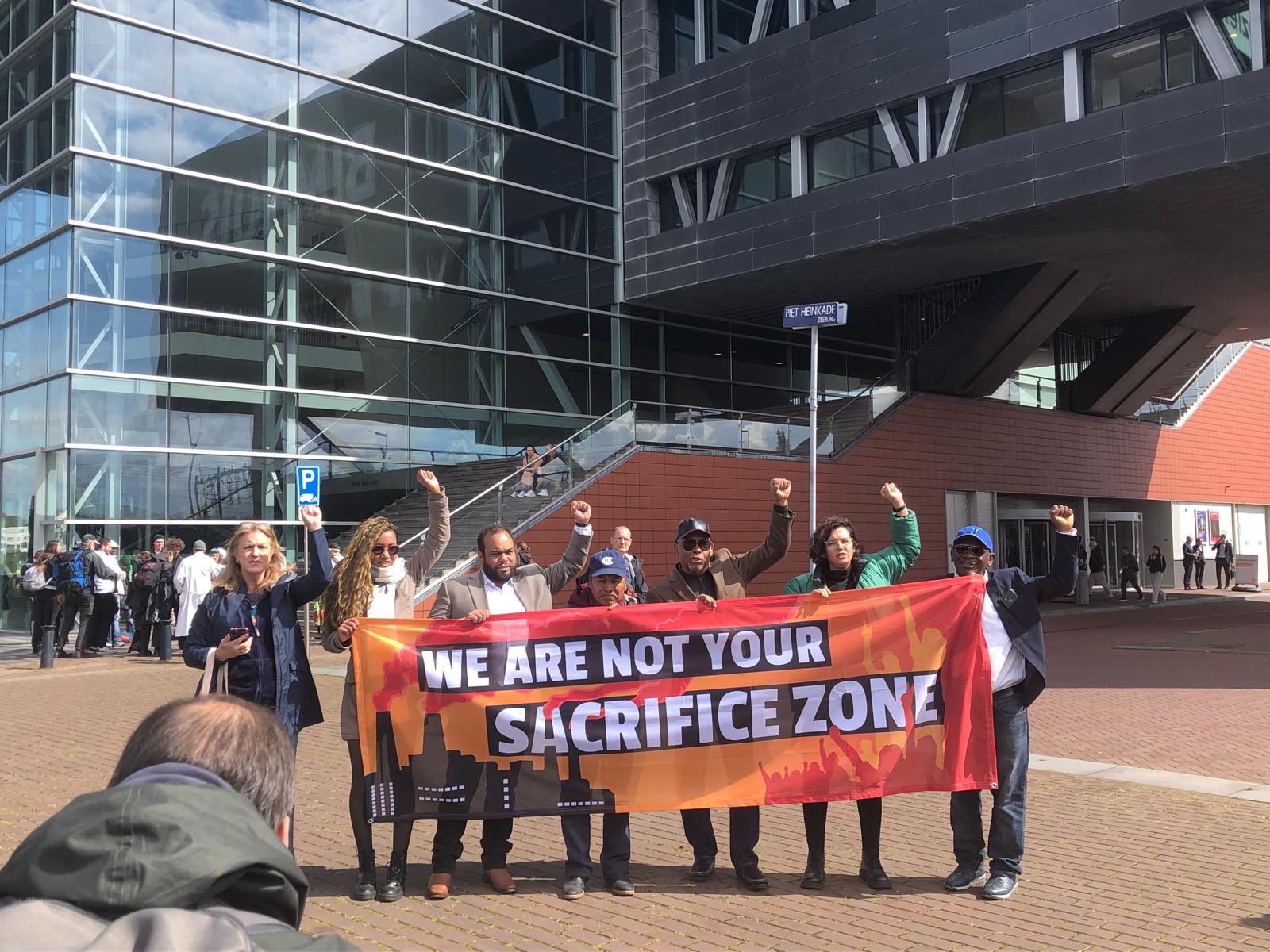
Clique aqui para Português
This article is part of a series created in partnership with the Behner Stiefel Center for Brazilian Studies at San Diego State University, to produce articles for the Digital Brazil Project on environmental justice in the favelas for RioOnWatch.
It was October 2012, and the streets of São Fernando—an area in Santa Cruz, a neighborhood in Rio de Janeiro’s extreme West Zone, or Planning Area 5 (AP5)—woke up silver. A “silvery rain” formed by the thick soot from a nearby steel mill coated streets, houses, and residents’ cars. The pollution was toxic, and health damages to the residents were the responsibility of what was then ThyssenKrupp Companhia Siderúrgica do Atlântico (TKCSA), now Ternium Brasil, owned by an Italo-Argentine group.
The steel mill was installed in 2010 in Santa Cruz. The launch was attended by the mayor of Rio de Janeiro, state governor, and Brazil’s president. At the time, politicians and businessmen celebrated the mill’s arrival, anticipating increased revenues and lauding job opportunities for the population in the far West Zone and Greater Rio’s Baixada Fluminense region.
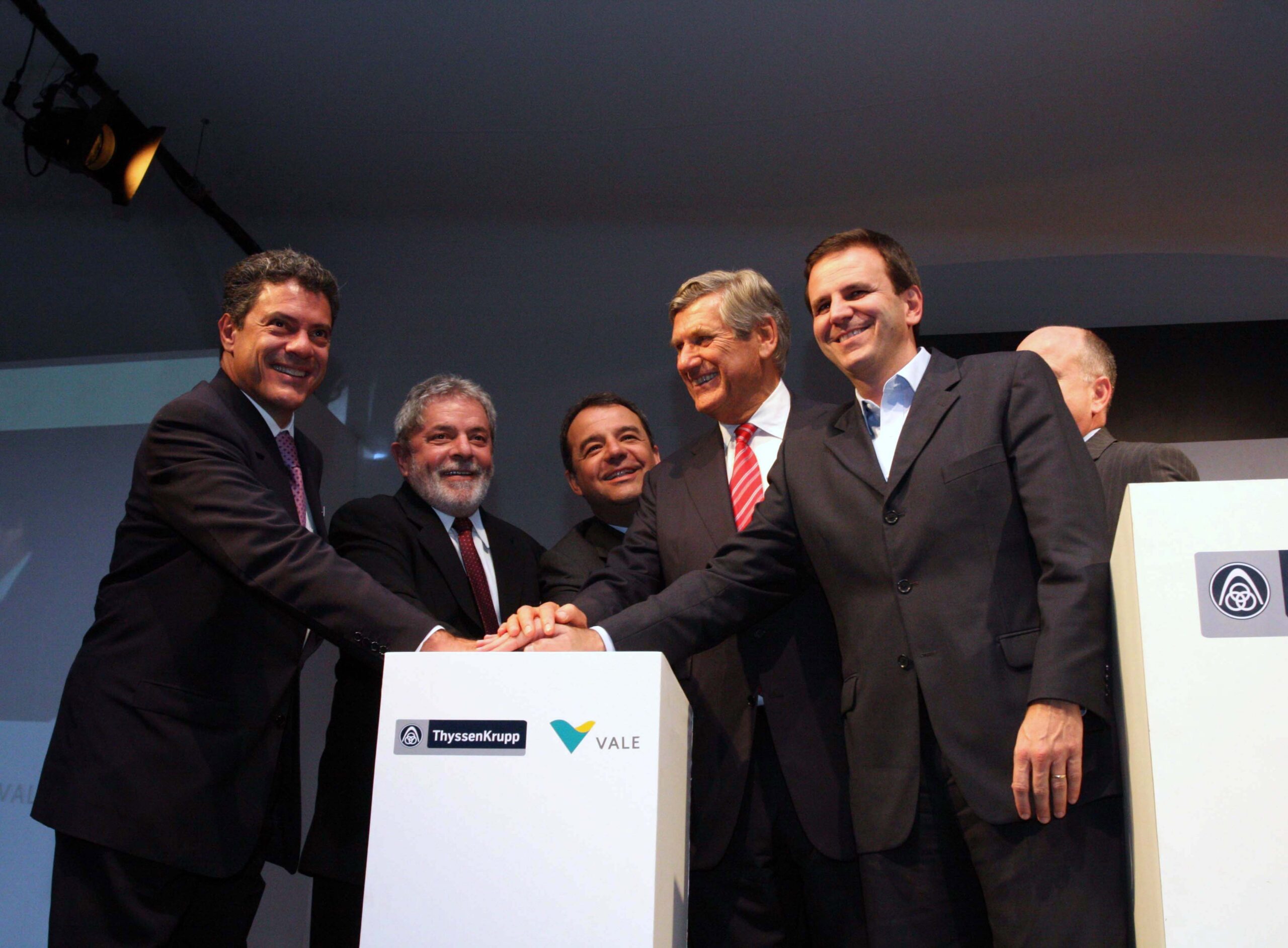
“The installation of CSA (Companhia Siderúrgica do Atlântico) in Rio de Janeiro is an event that will impact the entire city. As mayor, I thank you for the decision to set up here, for believing in Rio de Janeiro. Not to mention that the West Zone needs this type of investment, which will change the face of the entire region.” — Eduardo Paes, at the steel mill’s inauguration event in 2010
The other side of this story begins with local fishermen organizing against the steel mill out of fear that it would disrupt local fishing, which indeed ended up happening.
Amidst this, the idea of conducting popular health surveillance was brought forth by Brazil’s national health foundation (Fiocruz), PACS Institute, and Justice on Track Institute. From this surveillance, the Martha Trindade Collective emerged, named in honor of a local resident who was the first to denounce the activities of the steel mill. The collective is mostly made up of young residents from the area.
“The residents accepted the proposal for popular health surveillance, but they wanted it to be carried out by younger people. The youngest ones in the group were me, my sister, a friend of mine, and Flavio. So, we created a popular health surveillance group, and from that group, we created the Martha Trindade Collective, named in honor of Dona Marta, who was the first resident here in Santa Cruz to denounce the company for the health problems it causes.” — Aline Marins, founder of the Martha Trindade Collective
View this post on Instagram
Environmental Racism in the Industrial District of Santa Cruz
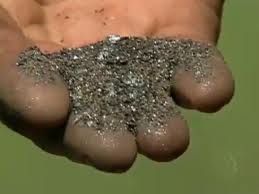
Besides the “silvery rain,” a series of floods became a constant reality after the steel mill was built in the region. In 2010, a major flood lasted a week. According to residents and reports from the PACS Institute, water drainage became increasingly difficult after the plant was set up.
The company received several fines for environmental crimes, some amounting to millions and others that are laughable, such as when the Rio de Janeiro city government imposed a fine of R$570.65 (US$108.62) per day in 2013 on a company with an annual profit exceeding R$1 billion (US$190 million).
“It’s a lot more expensive to invest in filters capable of reducing polluting emissions. Doing that is a lot more expensive than paying a fine. The fine is cheaper, so they’d rather continue polluting, harming people, and just paying a little fine… There was the ‘silvery rain,’ they paid millions in fines and who knows what else. They have money for that kind of thing; we’re talking about a company that has plants in Mexico, Liberia, South Africa, so this is no naïve company, you know? Therefore, it’s more difficult because it’s a struggle between unequal powers. We’ve been fighting them for 12 years and there’s been no resolution. There have been attempts at a settlement, but the company doesn’t want to settle because it knows it will win. All it’s done is win all these years.” — Jamilly do Carmo, member of the Martha Trindade Collective
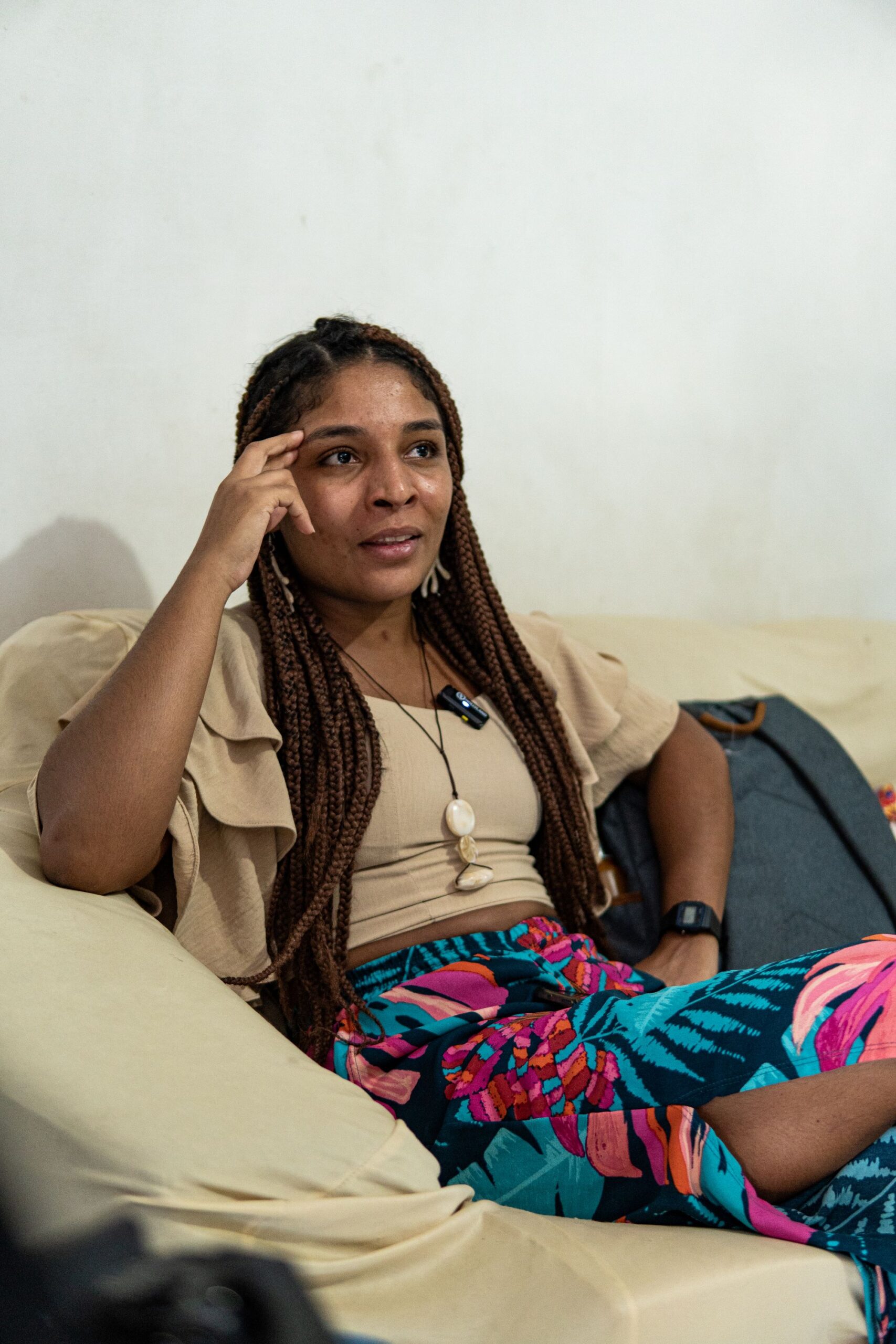
What is happening in Santa Cruz is known as a sacrifice zone: when governments or companies set up harmful or polluting activities in low-income, socially vulnerable regions, such as the favelas and urban peripheries of the Global South. In the name of purported progress, these companies perpetrate a series of environmental crimes that cause irreversible damage to the environment and the population. Since these crimes are no longer tolerated in their countries of origin, whether in Europe or the US, they export their model of production and criminal exploitation under economic justifications. However, these environmental and human damages arrive on new shores without the promised economic and social development. Ultimately, these criminal practices have the sole consequence of increasing the profit margins of these transnational companies, and the inequality generated by inherent environmental racism.
“A sacrifice zone is when these companies come to places where most people are poor and Black, like in Santa Cruz, set up operations, and do whatever they want: they degrade the environment, destroy people’s health… This usually happens in areas in the Global South… It doesn’t just happen in Brazil; it happens in many other parts of the world.” — Aline Marins, founder of the Martha Trindade Collective
In April and May 2024, Marins and other activists were invited to organize a series of activities for the Fair Steel Coalition, an international network of people affected by Ternium. Aiming to denounce the company in forums and institutions in European countries, residents from areas used as sacrifice zones by Ternium in Brazil, Mexico, and Liberia were scheduled to visit the Netherlands, France, and Luxembourg. Marins and others affected by predatory steel production engaged in international political advocacy, including in the parliaments of these countries, such as Luxembourg.
Ver essa foto no Instagram
Today, there are no longer heavy silvery rains like those that occurred in the company’s early years of operation in Santa Cruz, but there is still visible emission of toxic material, to the point of still dirtying people’s homes and penetrating their lungs.
The Fishermen
The São Fernando housing complex is surrounded by the waters of the Guandu River and Sepetiba Bay, historically an area with a tradition of agriculture and fishing. Since the steel mill first started being built, there has been a decline in fish stocks, whether due to pollution, toxic waste dumped into the waters, or the constant movement of industrial vessels in the region’s bodies of water.
According to fishermen and residents, fishing activity was compromised after the start of the construction works in 2004, which only intensified after the mill’s inauguration in 2010.

Jaci Nascimento, better known as Seu Jaci, 70, is one of these fishermen. He has been living in Santa Cruz for 40 years. Born on Ilha do Governador, he inherited fishing as a family activity. Throughout his life, among other things, he worked as a bus driver and recounts that when he arrived in Santa Cruz, he returned to fishing as a way of life and to support his family. Today, he is one of those who organizes against Ternium and its environmental crimes.
“First, it left 7,608 fishermen unemployed. We used to have an abundance of fish here; in just two hours, we would fill up the net. We could fill three boxes of fish in two hours in the river. We didn’t need to go out to sea… And then, [the company] built a long conveyor belt in the shrimp nursery here in Sepetiba Bay, where the fish no longer come in… when they do, if you’re a fisherman and you throw your net, the Port Authority immediately shows up to take you away because the company alerts them… [this company] only came here to harm the fishermen!” — Jaci Nascimento
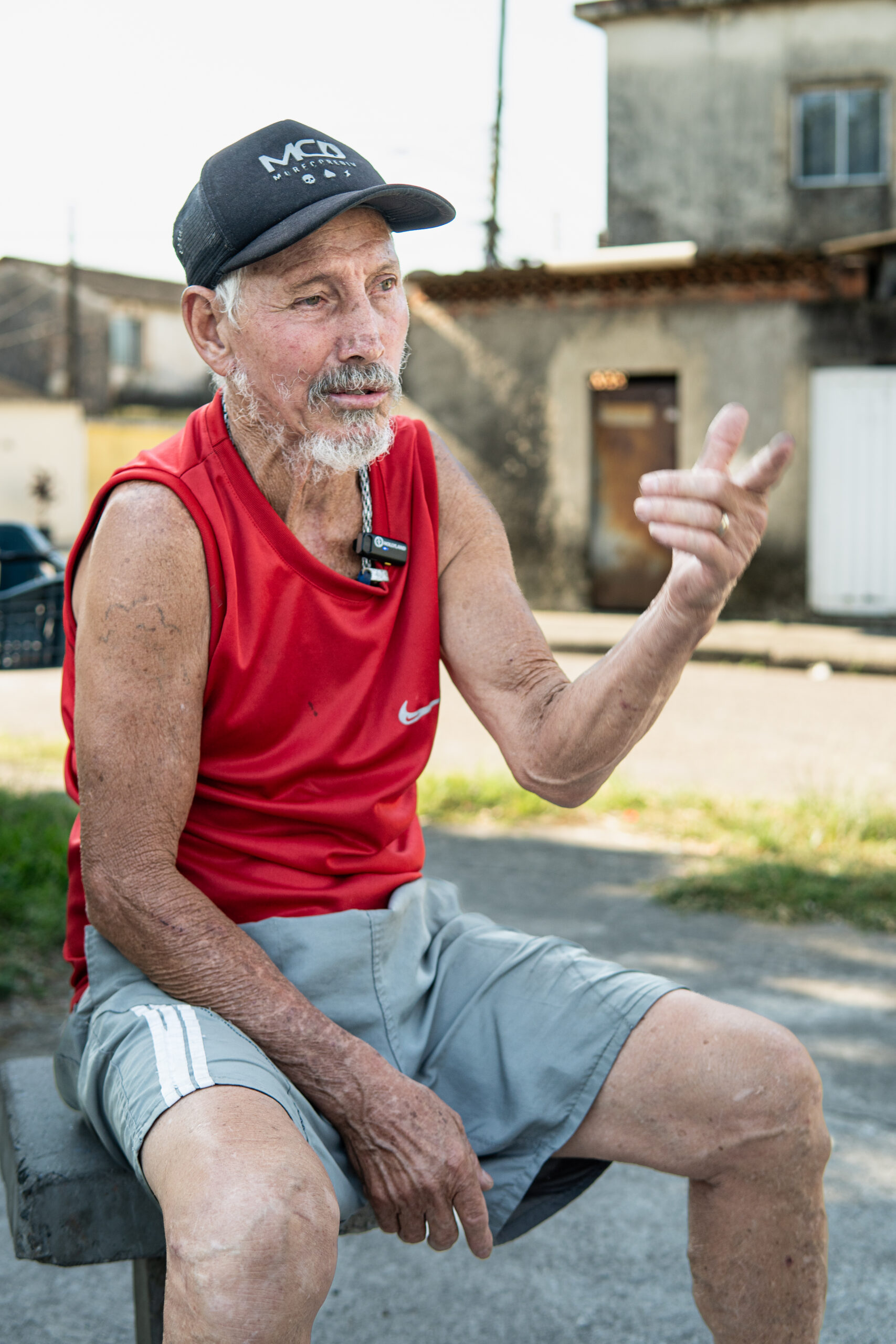
What Do The Authorities Have to Say?
Despite the series of crimes, the company continues to operate, harming the health of residents and destroying the local environment along the shores of Sepetiba Bay. Even with constant complaints, nothing concrete has been done by the authorities. One of the few times the public authorities chose to act was in 2012, when the Rio de Janeiro State Prosecutor’s Office (MP-RJ) requested the suspension of Ternium’s environmental license. Prosecutors Êvanes Soares Junior and Vinícius Lameira stated that there were flaws and irregularities in the licensing process, including in the environmental impact study. At the time, Lameira also expressed concern about the high levels of benzene, a carcinogenic chemical, in the air. Another point of concern raised by the prosecutors was the damage to the environment in a permanent protection area, putting the local fauna and flora at risk. But, as the residents protest, the company continues to profit while the population goes on suffering.
About the author: Vinícius Ribeiro was born and raised in the West Zone of Rio, and currently lives in Mangueira. Journalist, cinematographer and photographer, he is a member of the Fotoguerrilha Collective. He is director and screenwriter of short films Sobreviver, Dame Candole, Sob o Mesmo Teto and Entregadores, and is currently involved with a project about the Uberization and precarization of labor.
About the author: Lucas Novello holds a degree in journalism from Estácio de Sá University. A photographer and filmmaker, he was raised in Morro da Babilônia and is a member of the Fotoguerrilha Collective, where he focuses on grassroots communication and photojournalism, covering demonstrations, cultural occupations, social movements, and housing struggles. In 2022, he served as director of photography and editor of the mini-doc “ON: Uberization – What You Don’t See,” directed by Vinícius Ribeiro. Additionally, he works as a freelance filmmaker.

